Have you ever stumbled upon a fluffy, grayish-green patch while on a nature walk and wondered what it was? Say hello to Cushion Moss, also known as Leucobryum glaucum.
This little plant belongs to the White Moss family and can sprawl out from 50 cm up to a whopping 1 meter! With leaves that playfully stretch out 5 to 9mm from their center, it’s a sight to behold.
The fun doesn't stop there - when they’re all grown up, they puff up into cute low dome shapes, ranging from 12mm to 12.5 cm tall.
And here's some mossy trivia before you scroll: Did you know? The bottom leaves of this moss are more significant than the ones at the top? Exciting, right?
How to Grow Cushion Moss Outdoors
Cushion moss thrives in moisture and, if provided with the right conditions, will make an alluring addition to any garden. Once formed, the velvety, dense cloak of rich green hues is easy to maintain.
The best locations to grow cushion moss are those with a moderate-to-heavy shade. Cushion moss growth zones include USDA plant hardiness zones 4 through 10.
A great feature of cushion moss is that they don’t absorb nutrients from the ground, which means soil composition isn’t essential. Cushion moss needs a stable base to grow, so sand and loose gravel will not cut it.
Planting cushion moss can be relatively easy by breaking it into smaller pieces. Make sure no debris covers the moss.
Preparing the Ground
The first step is to remove grass and weeds from the ground using mechanical or chemical methods. Once the ground is cleared, it has to be smoothed to remove any air pockets that could collect water.
Make sure the ground is compact and doesn’t give way to weight. This helps avoid settling after the cushion moss is introduced.
You can spruce up the ground using surfaces such as rocks and paving stones to keep the leaf litter from accumulating.
Planting Cushion Moss
While cushion moss prefers plentiful moisture, it can tolerate drier climates than most mosses. This makes the spring and fall seasons ideal for planting moss. Start by creating perfect soil conditions.
You’ll want to ensure the soil is packed and firm; bonus points if it is very acidic since cushion moss thrives in these conditions. The ground needs good drainage; you don’t want soggy roots.
Target a pH level between 5.0 and 6.0; use a pH meter to determine soil acidity. If the soil is too alkaline, you can use sulfur powder to acidify it.
Lighting
Cushion moss needs ideal lighting conditions, thriving in brighter environments. This is contrary to other varieties of moss, which require darker environments.
It can be a process of trial and error to determine the ideal lighting conditions for moss. You must see what works by placing the cushion moss in any spot and how well it responds to the lighting.
Playing around with artificial light and indirect sunlight is good to see if it stimulates growth.
Watering
Cushion moss requires lots of moisture for proper growth. Make sure to water both water and moss as well thoroughly.
Ensure not to create a swamp or puddle while watering; if you have made a pool around the moss, try to remove the excess water when possible.
This is especially true if you’re growing the moss in a terrarium, which makes it difficult for the moss to evaporate.
It is better to mist the moss regularly while watering it every two weeks. Be careful not to use tap water because of the excess chlorine, which could brown your cushion moss. Use filtered water instead.
Growing Moss Indoors
You can grow moss indoors as well. The process is easy: fetch a clear glass container with a lid. A good choice would be a terrarium or a large jar.
Place pebbles in the container to a depth of at least one inch. Top it off with another inch of granulated charcoal. Alternatively, you can search for granular charcoal in fish stores.
Prop the indoor moss garden with differently sized sticks and stones until the base resembles a forest floor. Arrange the pieces so that the larger ones occupy the back of the pot and the smaller ones crowd up the front.
Now introduce cushion moss over the larger objects in the back, filling up the remaining area with crumbled bits of moss flake.
When planting, ensure the moss is pressed firmly onto the soil and rocks. Push the ground into the pot if it is too fluffy. Lightly sprinkle the moss with water and close the lid tight.
Click here to buy this on Amazon.
Cushion Moss Does not Need Fertilizer
Cushion moss does not need fertilizer. A robust nutrient solution could cause the moss to turn brownish and die.
However, if your cushion moss shares the same space as other plants, you can use a diluted fertilizer to feed the plant. Cushion moss does not need ‘food.’ They get all their nutrition from the sun and the air around them.
How Long Does Cushion Moss Need to Reach Its Full Size?
The cushion moss will take six weeks to thrive, reaching where moisture takes it.
Under ideal conditions, the moss can double their size in 3 to 6 months. Until then, water the moss diligently until they are well established.
Pruning Moss
Moss maintenance is entirely your choice. If you don't prune it regularly, it will take over your entire outdoor area.
If the cushion moss grows too thick and dense, water and light will not reach the middle sections, suffocating them until they turn brown and die.
While pruning is a good solution, it is straightforward to take more off. So make sure to remove less than what you think is necessary. Ensure your tools are sharp and the cuts are as clean as possible.
Larger and messier cuts will result in infection from pests and disease.
If you come across larger patches of moss that aren’t doing well health-wise, then it’s simply better to replace that chunk altogether with newly foraged moss (alternatively, you could buy more).
In the Forest
The mint green color of cushion moss shines through the forest landscape.
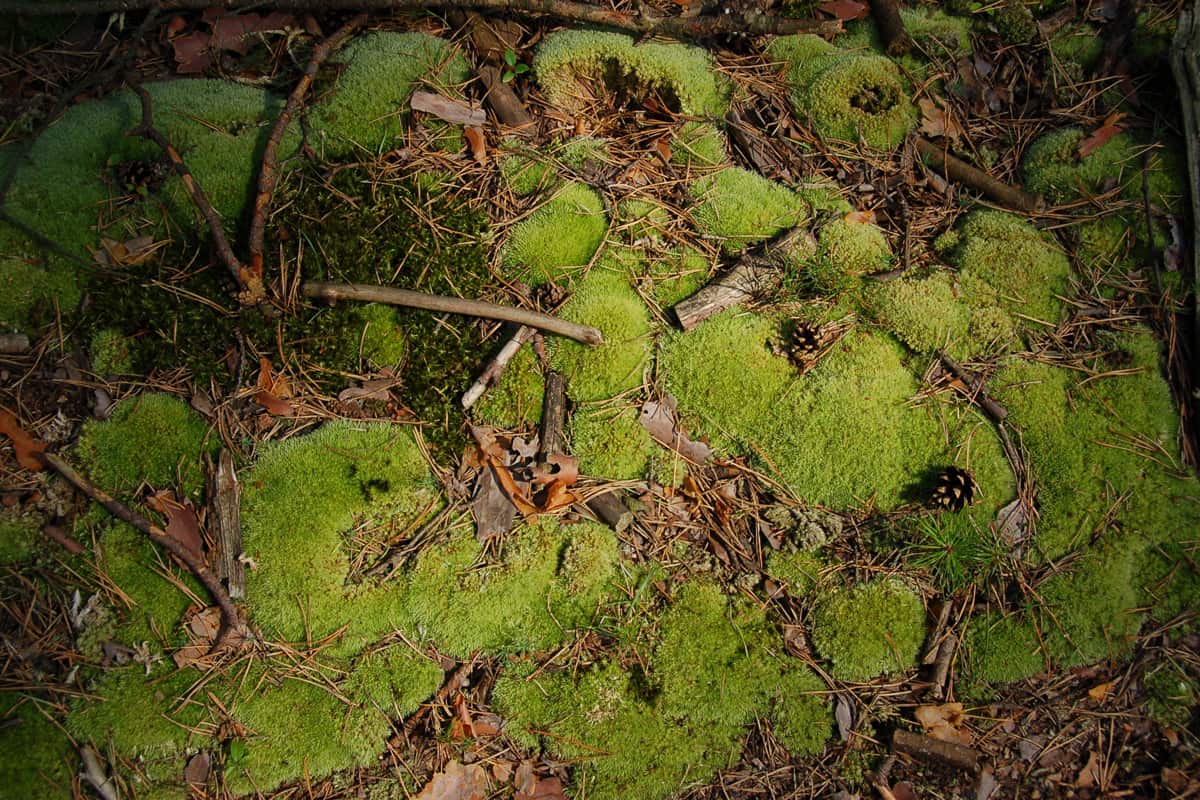
Reindeer Moss with Cushion Moss
One user was able to combine cushion moss with reindeer moss. Both species clump together, resembling the shape of a football.

Cushion Moss as Base
Cushion moss can provide a wonderful backdrop to other plants and foliage. Their rich green textures will always stand out.
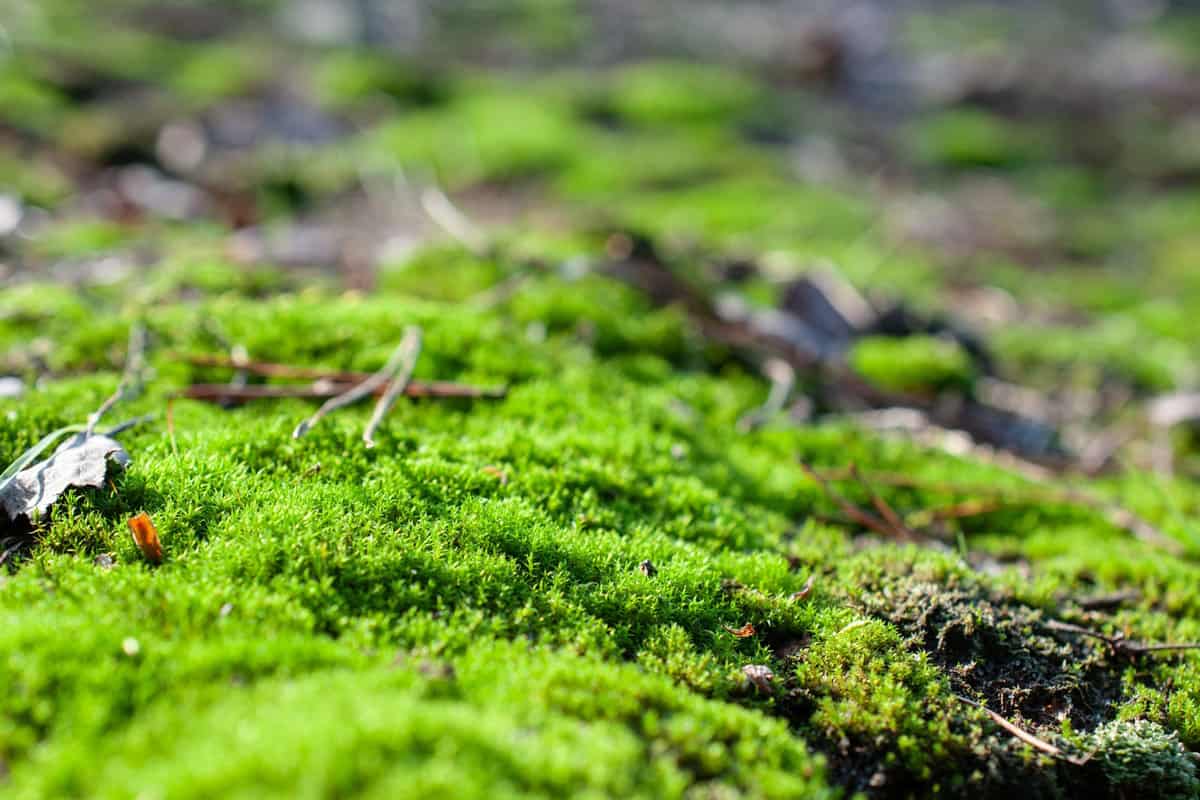
Using Moss Containers
Here’s a good idea to prevent cushion moss from taking over: use a large container such as a floral bouquet. It looks good and serves a valuable purpose.
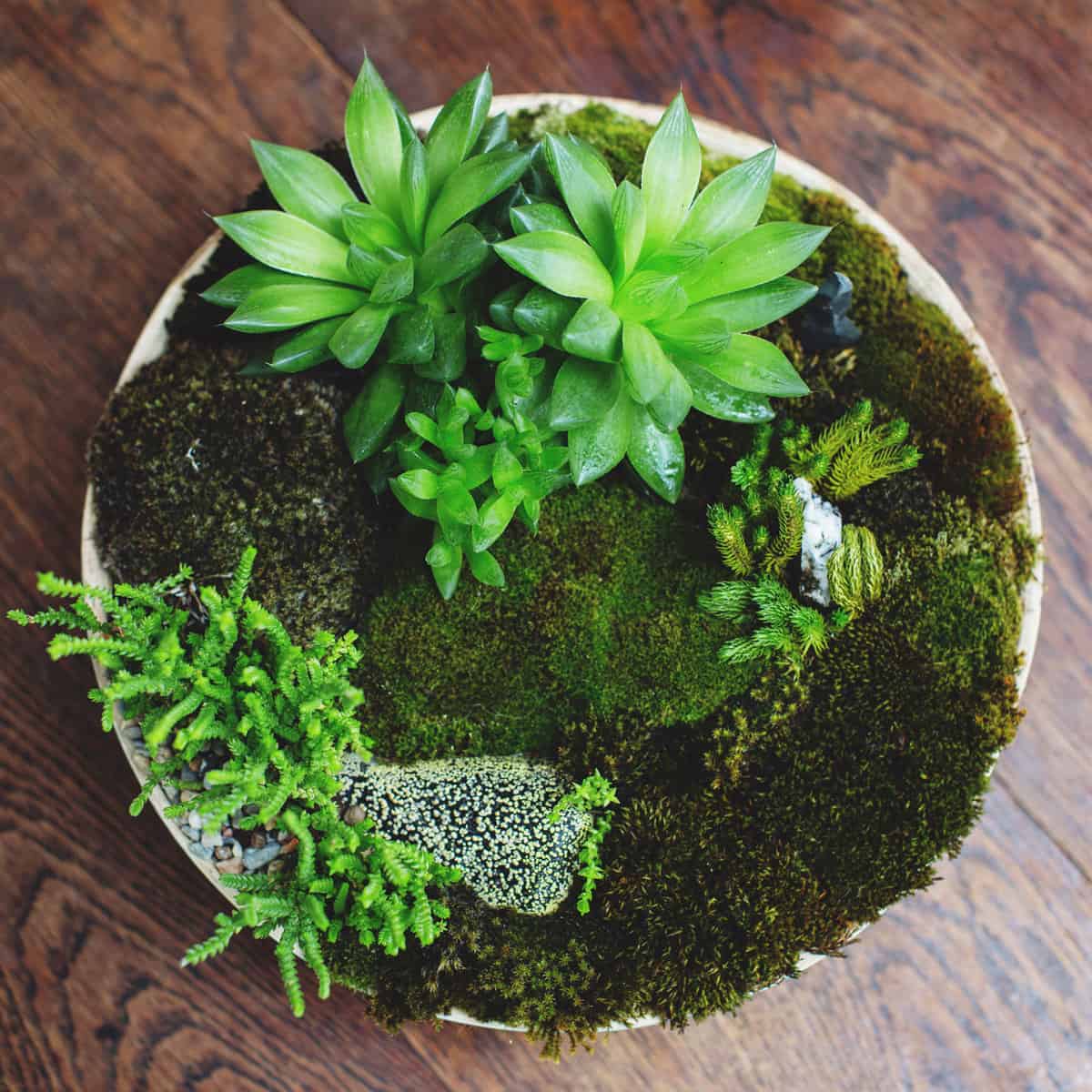
Add Other Decorations
Although cushion moss looks good in its own right, you can complement its beauty by adding other foliage.
Ensure the colors aren’t too bright, or they could take away from the grandeur of the moss.
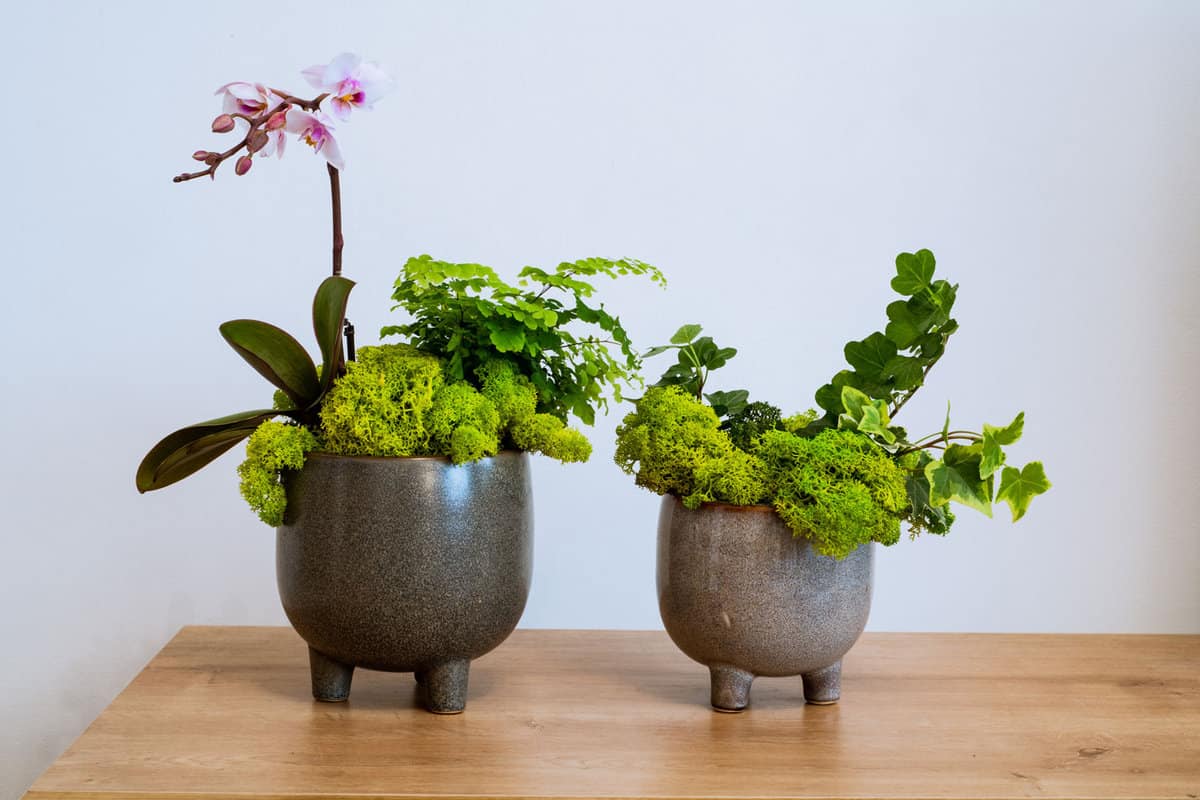
Nature vs. Man
Adding natural color to artificial obstacles looks more aesthetic than we give credit for.
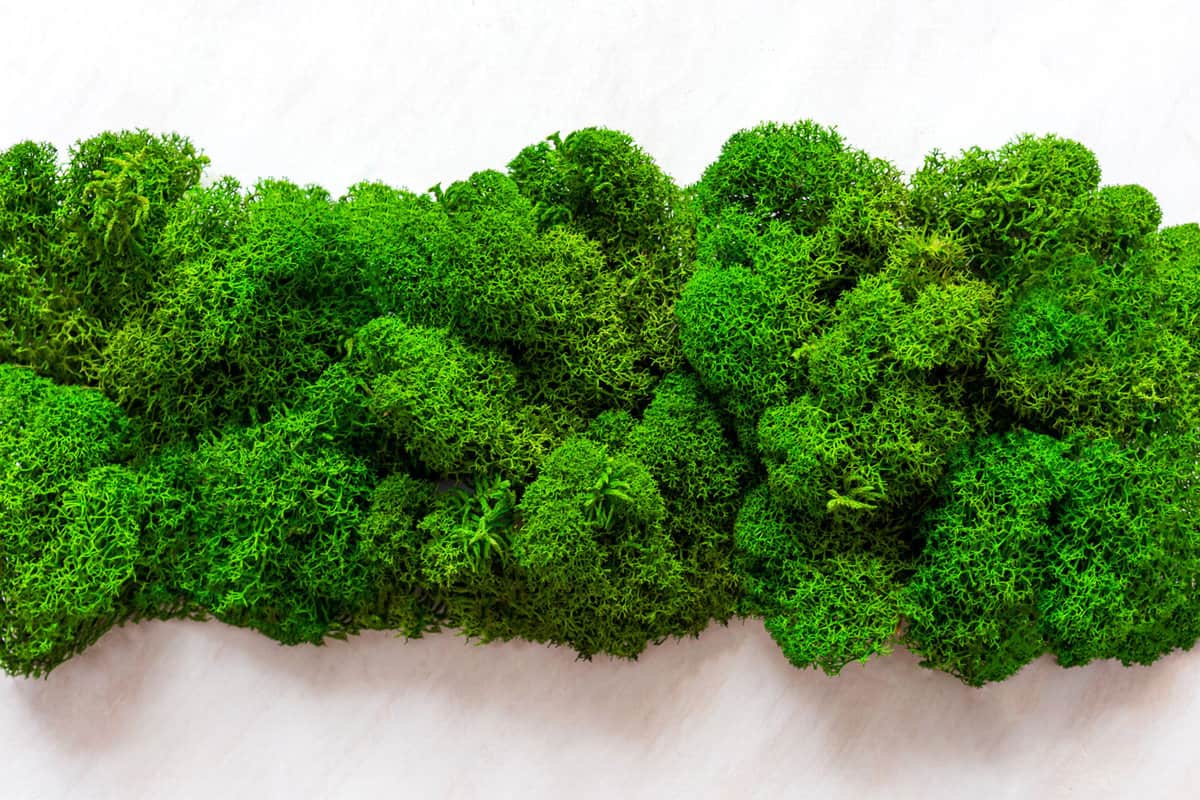
Landscaping Done Right
This homeowner found a perfect solution for moss growth: separate the borders using hard, flat surfaces, and moss won’t spread to other areas.
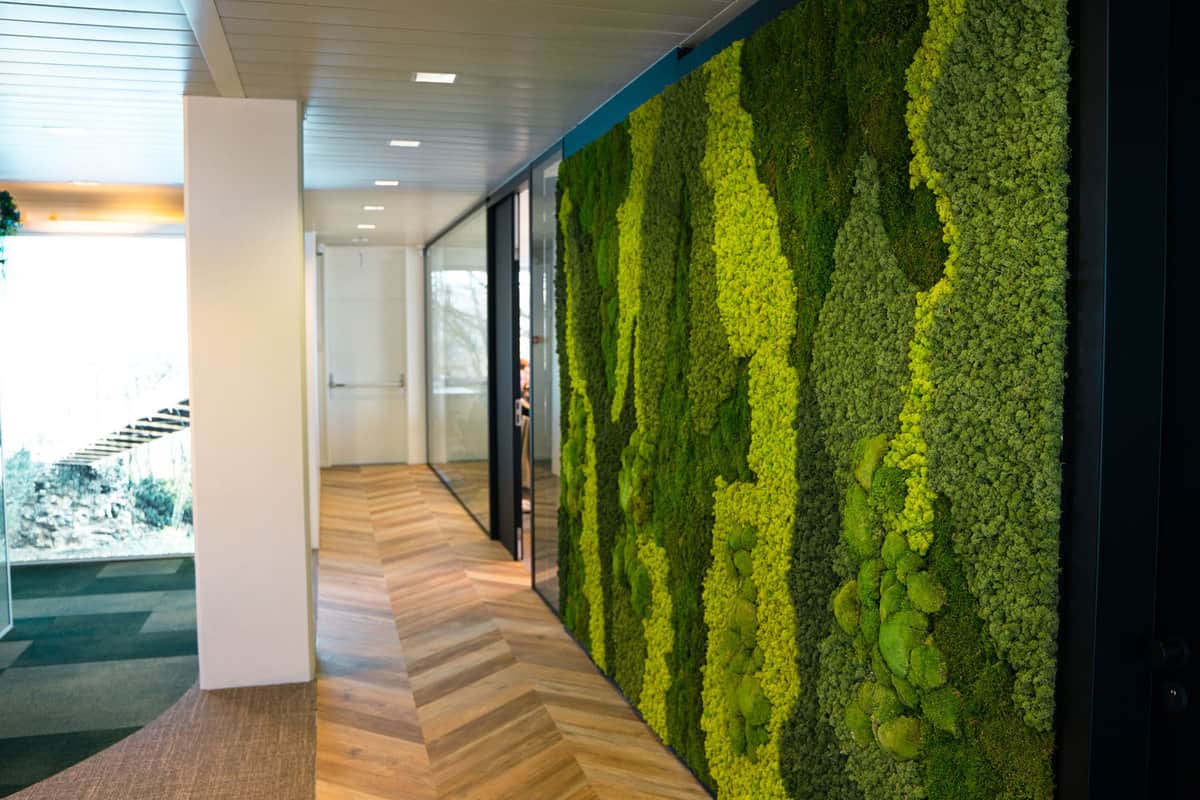
Tiny Moss Garden
Since you can grow it anywhere, cushion moss is versatile enough to pursue as a mini-project.
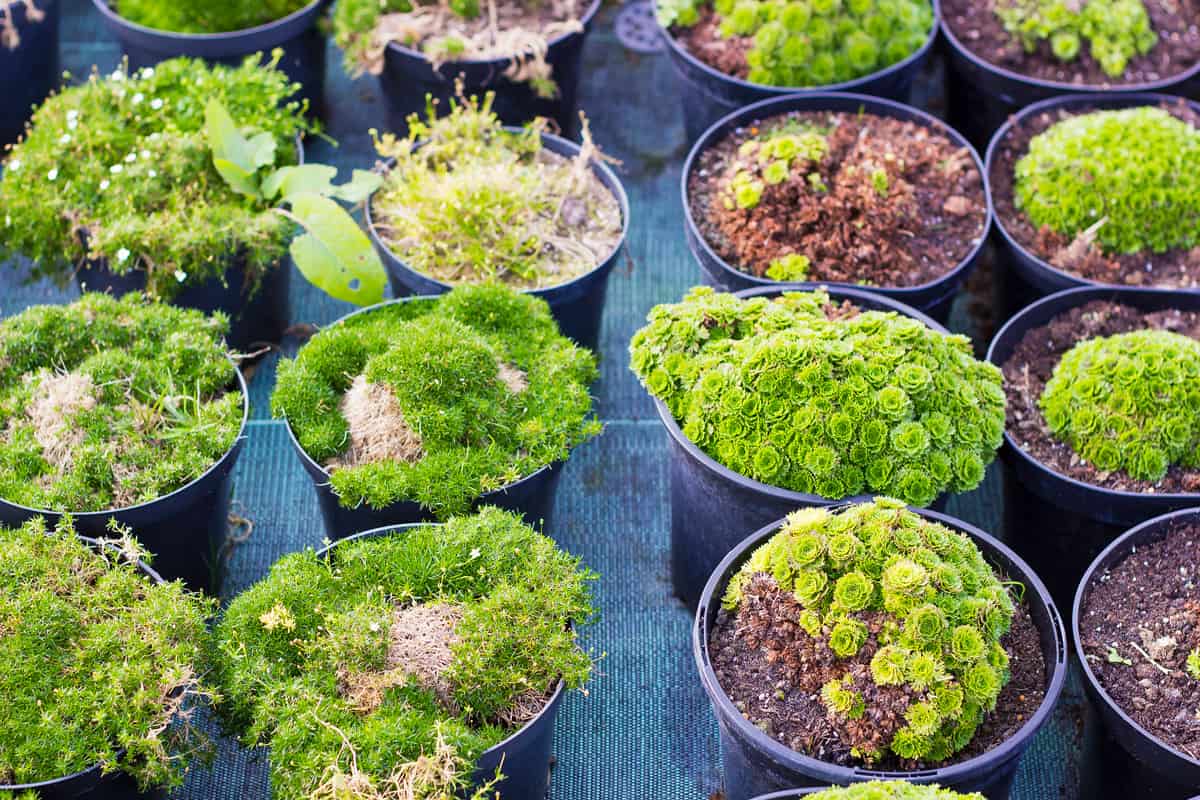
Moss Hill
You can choose any shape of terrarium or glass container you want. The versatility of moss encourages creativity.
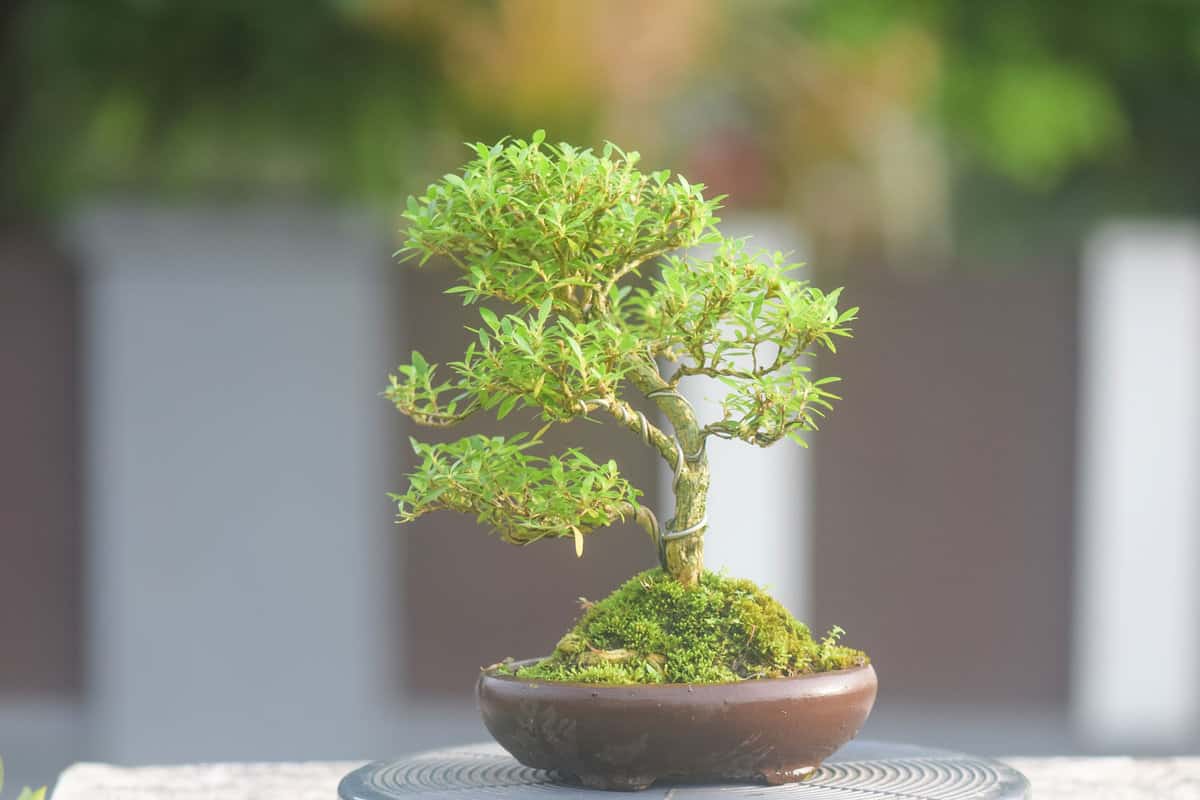
Moss Bed
Yes, you can make a bed of cushion moss. It’s tempting, but don’t step on it.
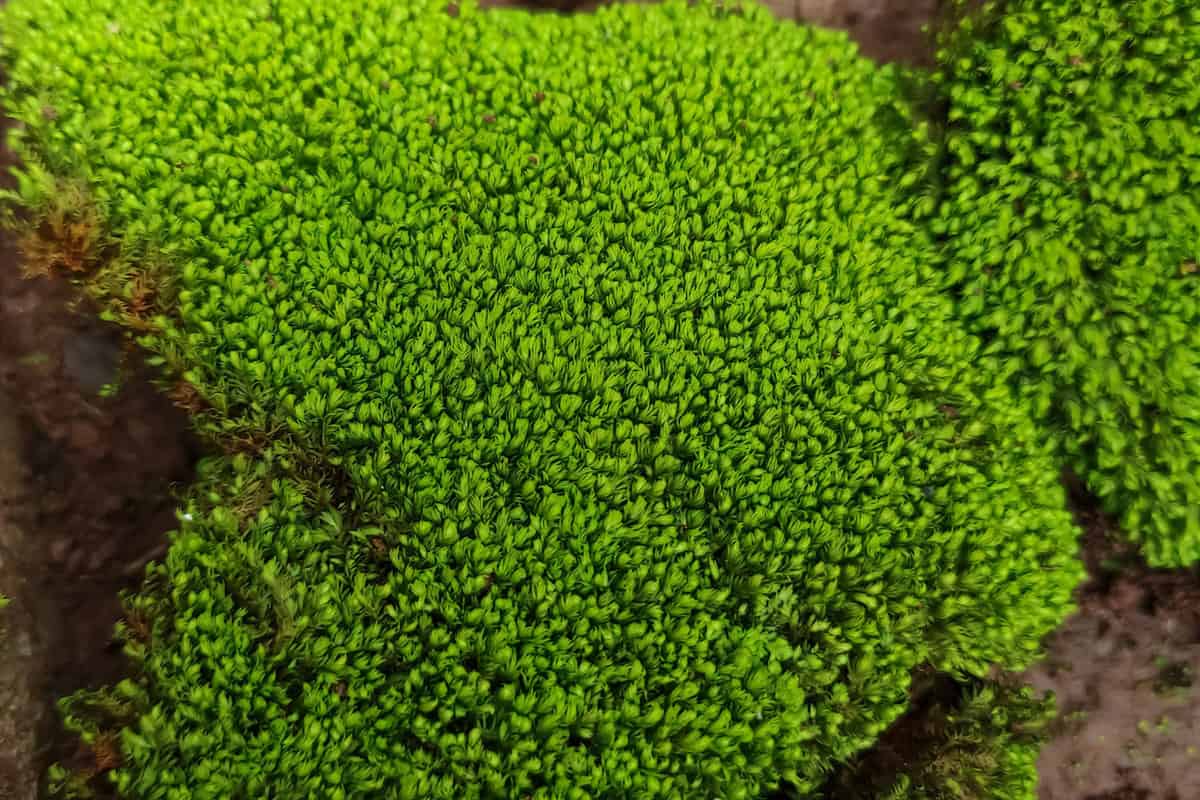
Authentically Mossy
Cushion moss has a texture that automatically pops up on its own. It looks beautiful in gardens, making it look authentic.
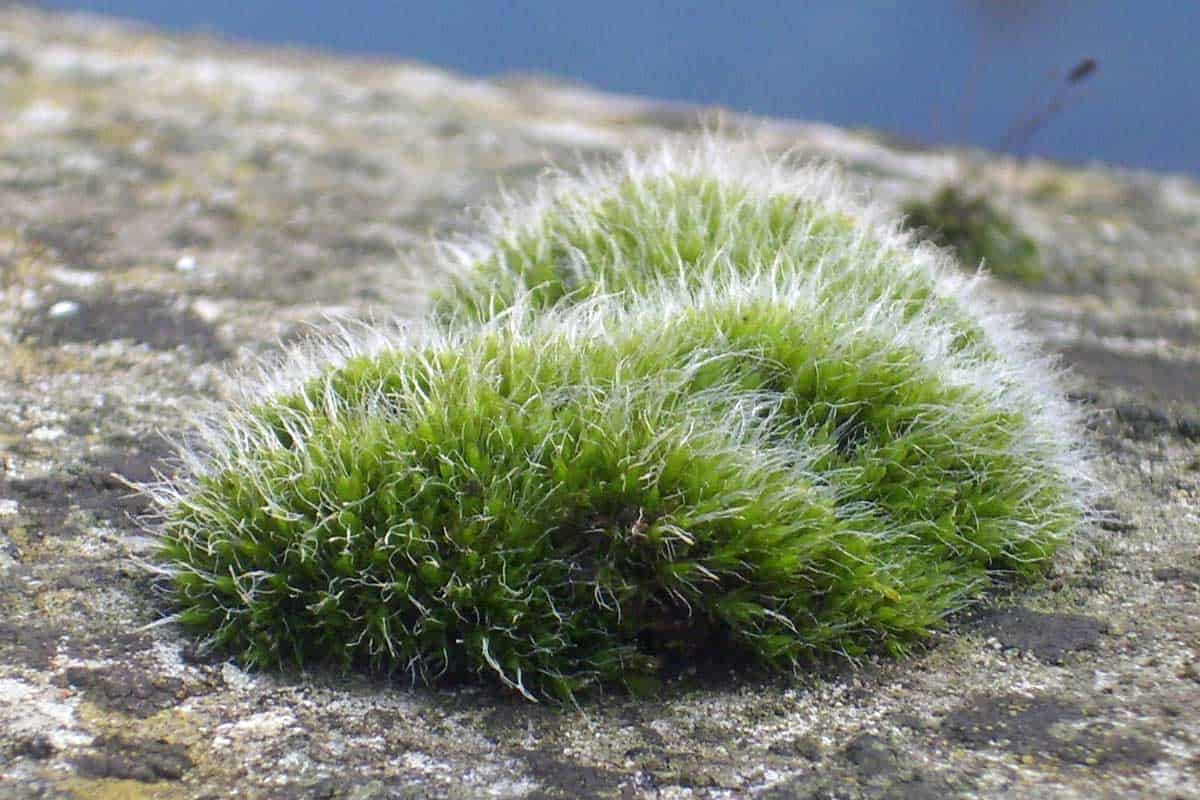
Use as a Garden Accent
Don’t underestimate how beautiful cushion moss can be. It can be used to accent dull ground in the garden.
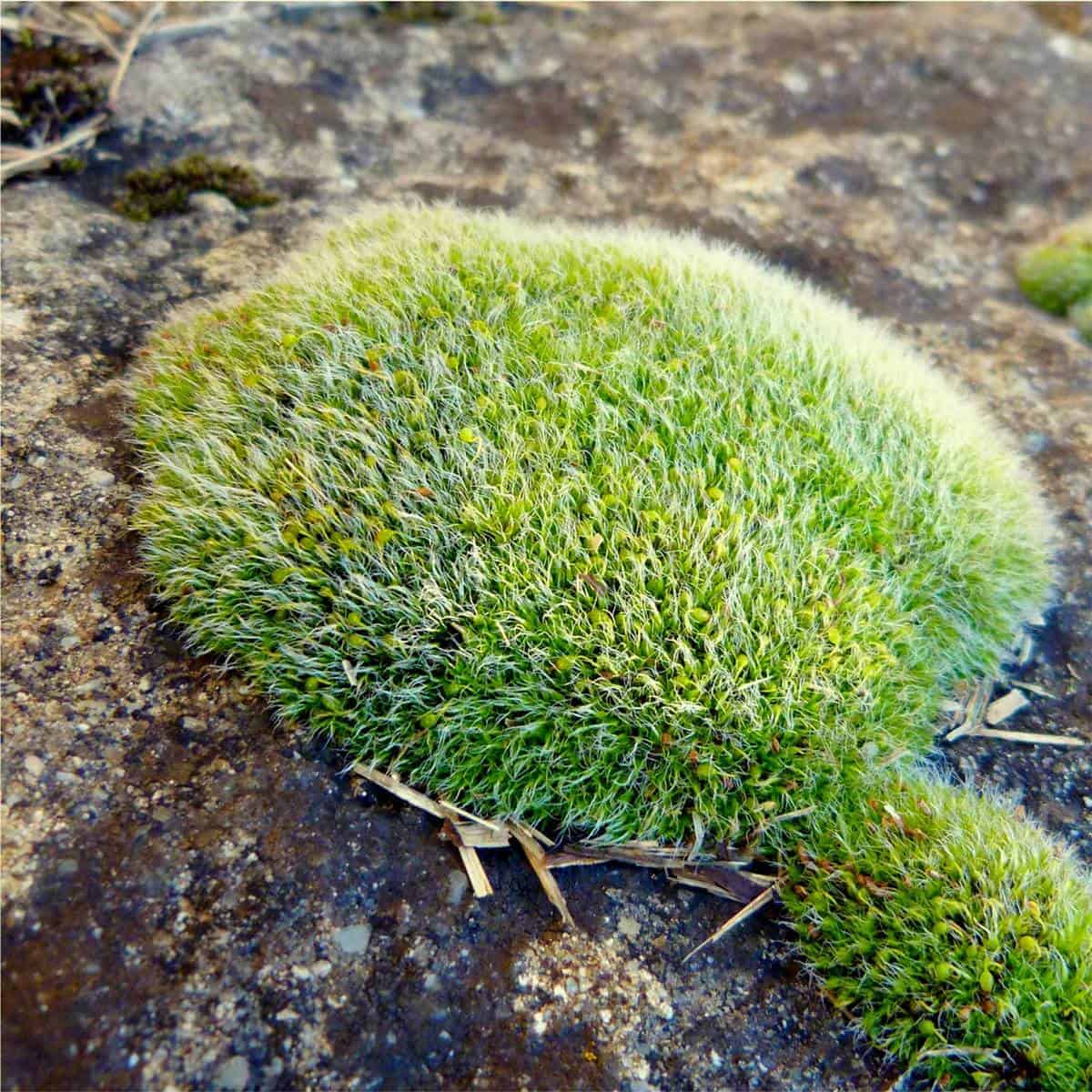
Choose where to Grow it
The ideal patch of cushion moss grows where you want it to without spreading like wildfire.
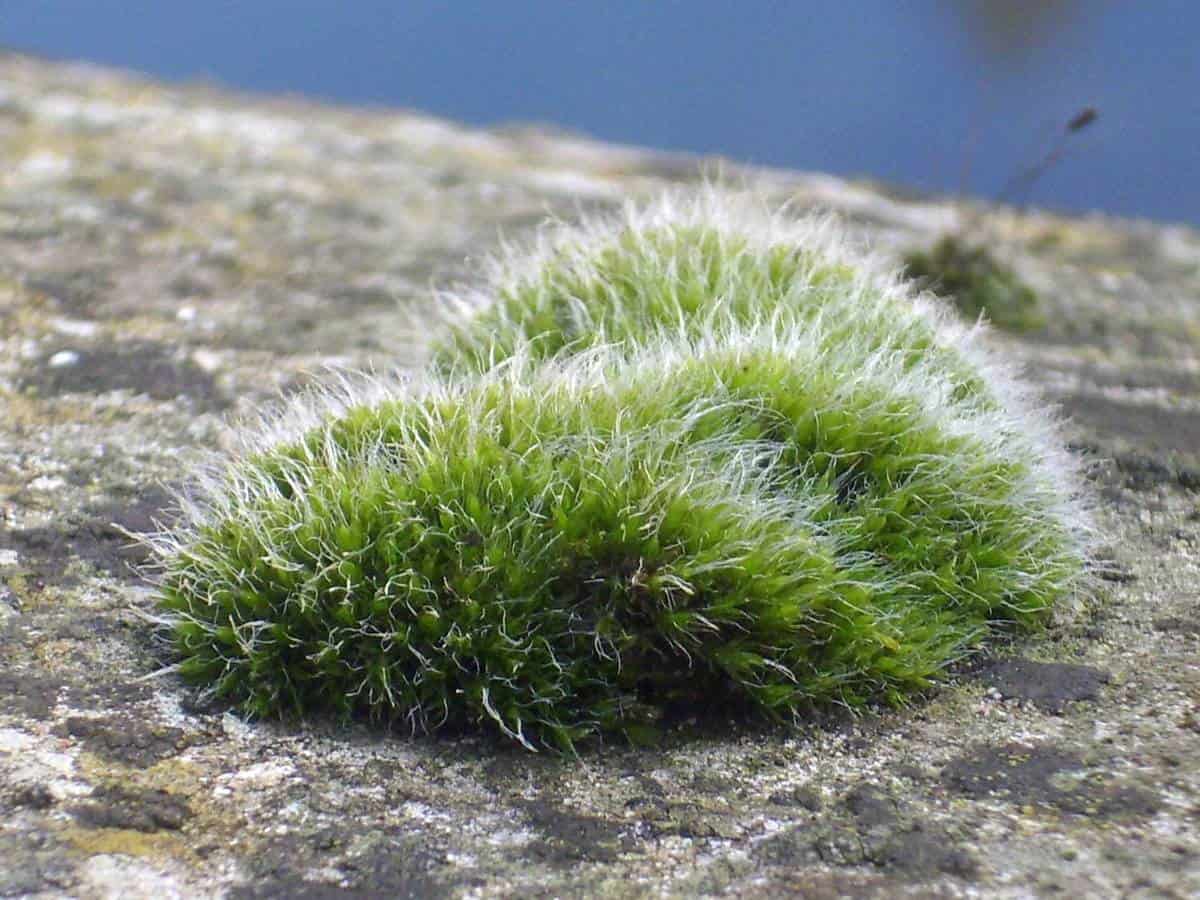
Where to Buy Cushion Moss
Whether you want to create a serene moss garden, add a touch of green to your terrarium, or embark on a DIY decor project, cushion moss is a beautiful choice.
You can find a source that fits your needs by exploring these options:
Local Garden Centers and Nurseries
These establishments often carry a selection of native mosses, including cushion moss. Purchasing from local sources ensures the moss is adapted to your region's conditions.
Terrarium or Aquarium Stores
Given the popularity of cushion moss in terrarium and vivarium setups, these specialty stores often stock various moss types.
These establishments also often have knowledgeable staff who can provide care tips and advice.
Online Retailers
Websites like Amazon, Etsy, Happy Forest Store, and other specialized online plant stores offer various plant species, including cushion moss.
Buying online allows for convenience and a broader selection, but always check reviews and sustainability practices before purchasing!
Level up your knowledge about moss by reading these:
Moss Fertilizer 101: How To Feed Your Moss And Keep It Healthy
Planting Moss In Your Garden: Where And How To Do It Right
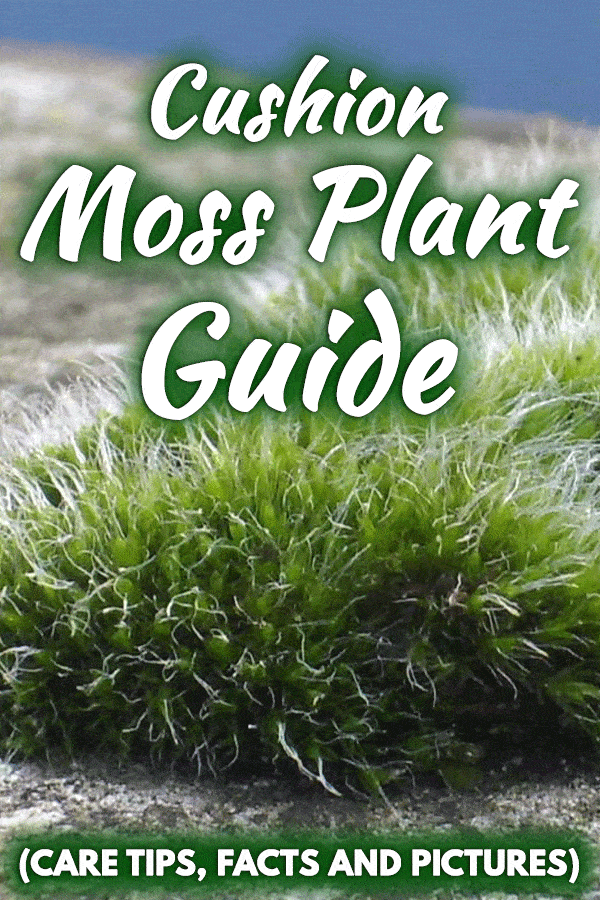


Hello Garden Tabs
Our company locates in guangzhou city,china.We want to purchase your cushion moss products.That is to say,you can supply the cushion moss to us about 10000kg one year.But we donot know how to discriminate the mood moss and cushion moss.Can you tell the differences between mood moss and cushion moss with the pictures? After you explain their diffrences between cushion moss and mood moss to us.We will place odres to you for cushion moss.Hope to hear from you.Tks.
Best Regards
Justin Wong
Guangzhou,china